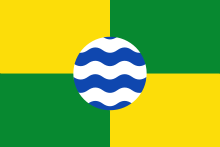- Nairobi City Council
-
The Nairobi City Council is the local authority governing the city of Nairobi, Kenya . It is the largest of the 175 local Authorities in the country and is under direction of the Ministry of Local Government.
The Chief Executive of the City Council is the Town Clerk and is appointed by the Minister of Local Government. The Non executive branch of the Council is headed by the Mayor. The Towne Clerk oversees the functions of 17 main and 4 sub committees whose members are City Councillors. Each committee is chaired by one Councilor. The committees meet at scheduled meetings and adopt proposals by consensus. The proposals then pass through a full Council for review. Proposals can only be approved as Council Resolutions by the Minister for Local Government having been reviewed by the full Council.1
The main offices of the Nairobi City Council are located at City Hall Plaza on City Hall Way. City Hall was constructed in the 1950s. At that time it was the tallest building in Nairobi with its clock tower standing at 165 ft high. The building was expanded in 1981 with the addition of the 13 storey City Hall Annex.
Contents
History
In 1963 after Kenya achieved independence, the Nairobi Urban District Council, NUDC or simply UDC, became the City Council of Nairobi (CCN).2 The Council was created by an act of Parliament, Cap 265 of the Laws of Kenya to provide services to residents of the city. Among other functions, the City Council is responsible for the provision of essential services like water, sewer and public safety.
Structure and Organization
The Executive branch of the city is headed by the Town Clerk. He oversees the functions of the following:
1. Director - Public Health Department
2. Director - City Inspectorate Department
3. Director- Environment Department
4. Director Environment Department
5. Assistant Director - Town Clerk’s Department
6. City Treasurer- City Treasury Department
7. City Engineer – City Engineer’s Department
8. Director- Education Department
9. Director -City Planning Department
10. Director Housing Development Department
11. Director Human Resource Department
12. Director – Procurement
13. Director Legal Services
14. Director Investigations and Information Analysis—General Manager – Nairobi Water and Sewerage Company.
The policy formulation branch of the city is headed by the Mayor who oversees the functions of the following committees.
1. General Purposes Committee
2. Education Committee
3. Social Services committee
4. Staff Committee
5. Public Health Committee
6. Water and Sewerage Committee
7. Internal Committee
8. Environment Committee
9. Works Committee
10. Inspectorate Committee
11. Town Planning Committee
12. Housing Development Committee
13. Joint Workers Committee
14. Joint Staff Committee
15. Finance Committee
16. Tender Committee
17. LASDAP Committee.3
Sub-committees of the Council: Rental Housing Sub-committee
Property and Assets Sub-committee
Works Sub-Committee
Licensing Sub-Committee
Street Naming Sub-Committee
Elections and Representation
The city is divided into 8 divisions which also serve as Parliamentary Constituencies. 55 City Councillors are elected to represent Wards in the 8 divisions. The Councillors are elected by registered voters to serve five year terms after which they may seek re-election. After the elections, the party with the majority of Councillors gets to nominate 12 Councillors while the minority party nominates 8 Councillors.4
The Mayor and Deputy Mayor are elected by the Councillors to serve a two year term after which they may also seek reelection.
Council Divisions and Wards
Division No. of Wards Ward Names Makadara, 7 Harambee, Hamza/Lumumba, Makongeni, Mbotela, Nairobi South, Ofafa, Viwandani, Embakassi, 11 Dandora, Embakasi/Mihango Kariobangi South, Kayole, Komarock, Mukuru-kwa Njenga, Njiru-Mwiki, Ruai, Savannah, Umoja Kamkunji, 6 Eastleigh North, Eastleigh South, Kimathi, Muthurwa/Shauri Moyo, Pumwani, Uhuru Dagoretti, 6 Kawangware, Kenyatta/Golf Course, Mutuini, Riruta, Uthiru/Ruthimitu Waithaka Kasarani, 9 Githurai, Kahawa Kariobangi North, Kasarani, Korogocho, Mathare 4A, Roysambu Ruaraka, Utalii/Babadogo Langata, 6 Karen/Langata, Kibera, Laini Saba, Mugumoini, Nairobi West, Serang’ombe Starehe, 5 Central, Huruma,, Kariokor, Mathare, Ngara Westlands, 6 Highridge, Kangemi, Kileleshwa, Kilimani, Kitisuru, Parklands Corruption and Problems Facing the City
The City Council of Nairobi is responsible for providing services such as housing, healthcare facilities, primary education, emergency response, waste collection, water and sanitation among other services. Most residents however, feel that the city’s ability to provide services is deteriorating and the local government is not effective enough in reducing corruption and poverty. Some vices related to corruption include:
- Informal settlements mostly slums and illegal structures mushrooming in the city.
- “Land grabbing”
- Water shortages in the city due to inadequate supplies.
- Uncontrolled dumping of waste.
- “Ghost employees” - non existing employees whose names appear on the city’s payroll and receive pay regardless.
- Street Urchins
- Influx of Street Hawkers
- Bogus names Gazetted as elected Councillors.5
- Shameful fights and brawls by Councillors at Council meetings
The current Mayor, Geoffrey Odhiambo Majiwa elected in 2009, temporarily “stepped aside” on October 28, 2010 pending the outcome of a court case against him related to cemetery land corruption.6 His functions are currently being performed by the Deputy Mayor, Councillor George Aladwa.
Most city residents have vowed not to tolerate corruption but to fight tooth and nail to have persons in charge of dysfunctional departments thrown out of office. The Kenyan Minister for local government is Musalia Mudavadi.
References
1. http://www.unep.org/dewa/africa/docs/en/NCEO_Report_FF_New_Text.pdf
3.http://www.unep.org/pdf/NEO_Exec_Summ.pdf
4.http://www.unep.org/pdf/NEO_Exec_Summ.pdf
5.57 councillors on Uhuru list lose jobs. Daily Nation Tuesday, August 5, 2008
6. http://www.bbc.co.uk/news/world-africa-11628433
External links
Categories:
Wikimedia Foundation. 2010.


